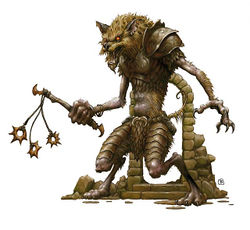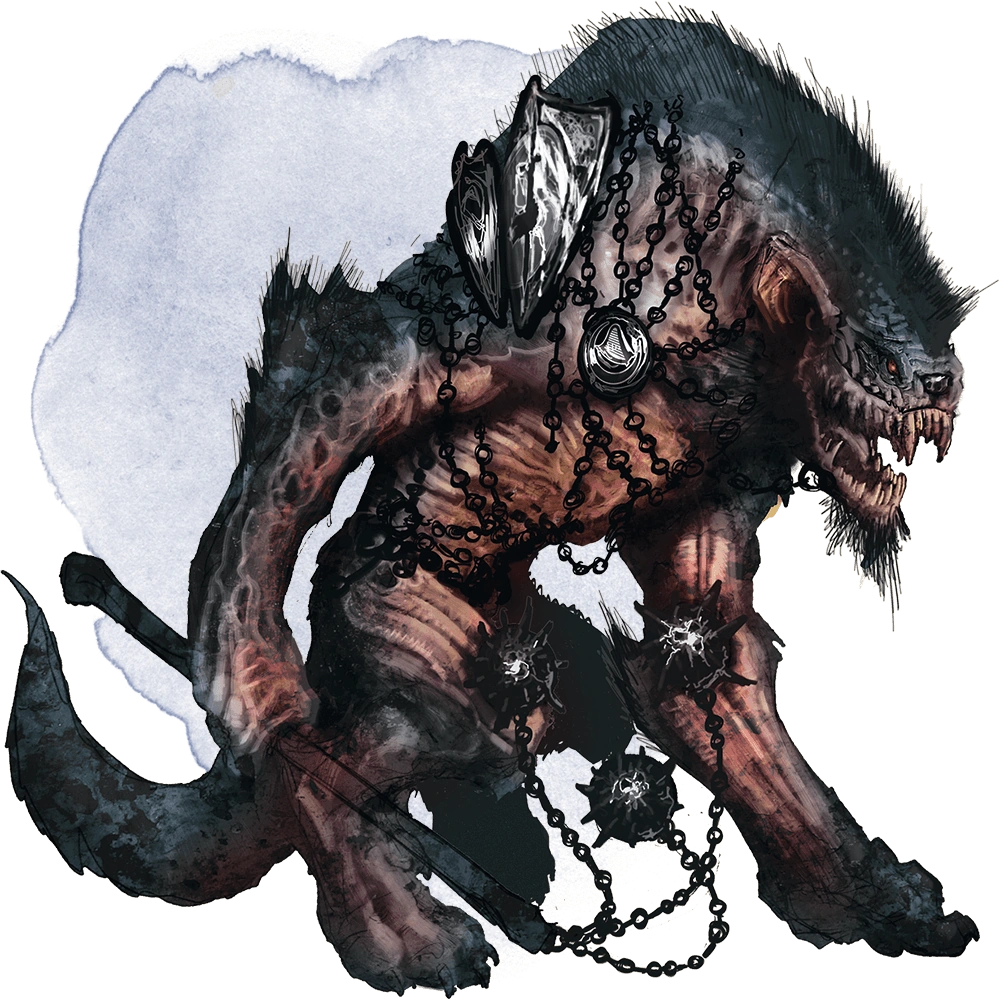Stat
|
3.0
|
5e
|
Hit Dice
|
33d8+363 (511)
|
24d12+192 (348)
|
Initiative
|
+13
|
+3
|
Speed
|
40’
|
50’
|
AC
|
42/24/33
|
22
|
Saves
|
+29/+27/+25
|
+9/+10/+15/+3/+14/+2
|
Attack
|
+51/+46/+41/+36 (+4 vs good)
|
+16 (x3 flail, x1 bite)
|
Damage
|
1d12+24
|
2d12+9 (flail) 4d10+9 (bite)
|
Resistance
|
DR 15/+6, 10 acid/cold/lightning
|
Cold, fire, lightning, spells
|
Immune
|
Fire, poison
|
Poison, mundane weapons
|
The problem with the left is I don't know what those numbers really mean. I know how high +16 to attack is. It's "the rogue is toast if this bastard gets close." This is because the absolute highest base AC goes with magic items is 29 (+3 shield, +3 plate, ring & cloak of protection, +1 Armored style). But how high is +55? Is Yeenoghu auto-hitting his attacks? Or do magic items get you over 60 AC by the time you're ready to fight toe-to-toe with Yeenoghu? I mean, I guess they must...but then this highlights the absurdity. Roll a number from 1 to 20...then add 55.
Come on.
Second thing was that to type this up at all, I had to refer to three different sources for the BoVD version. In 3.0, monsters are loaded up with tags that you have to look up. Yeenoghu has "tanari'i traits" and "outsider traits." This is in addition to his feats (most of which are really common, like Power Attack, but still, there's potentially a lot to look up). 5e has everything right there in the stat block.
Now, the 3.0 Yeenoghu obviously can't even be approached by low-level heroes. They wouldn't be able to hurt him, and he'd auto-hit them to death. Additionally, he has spells to ensure he has minions, a fear aura, and a whole bunch of other crap. All this is based on the assumption that the DM is just a fleshy computer who can't figure out on his own that the "Demon Prince of the Gnolls" ought to have, uh, gnolls with him, or that you shouldn't have sessions where a minor deity starts off with a thousand longbowmen shooting him simultaneously with enchanted arrows. There is basically a lot of stupid math to prevent silly edge cases that don't happen in real games. This is ironic for a game where the Fighter is fundamentally broken as written.
 |
| 3.0 is tougher than he looks. |
But how badass is the 5e version? Well, he isn't invincible, and the point of bounded accuracy is acknowledging that he doesn't need to be because nobody runs D&D as a simulation. Honestly, the number of people who care whether or not you can drop a monster from the book into an artificially constructed scenario like 900 9th-level monks or something and have it work out "logically" is vanishingly small. If the DM decides to send you spelunking into the lair of the gnoll prince at 10th level, you're going to get TPK'd and not really care if you did 102 damage before you all went down.
Instead of making Yeenoghu fearsome by making all his numbers super big, he hits really hard, has riders on his hits that will annihilate moderate-level parties quickly, and has a number of useful spells. With all that considered, the guy is fully capable of downing any character of 14th level or below in a single action, and even a 20th-level wizard isn't going to last a round toe-to-toe. Like his 3rd edition predecessor, he's got a few tricks up his sleeve other than "beat the crap out of you," including "everybody save vs fear, DC 17" (hey, DC 17 means something to me!) and "teleport to wherever I want if you guys are trouble."
 |
| 5e art took a step up. |
So 5e dispenses with theorycraft nonsense in order to keep numbers sensible and monster stat blocks readable, and relies on the DM to not be a total idiot to make it all work.
No comments:
Post a Comment